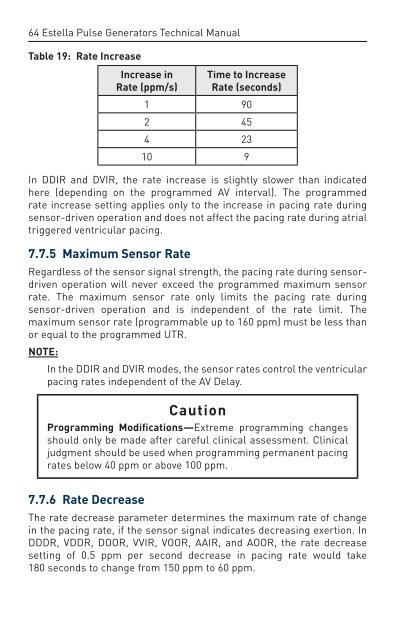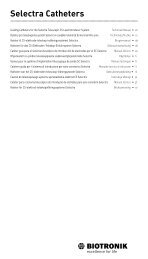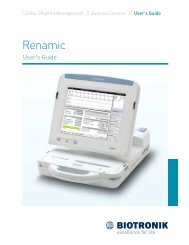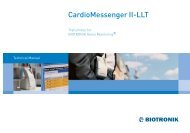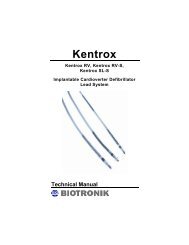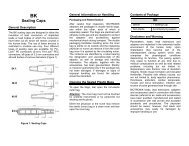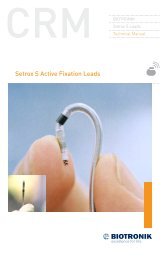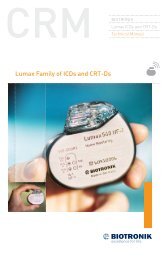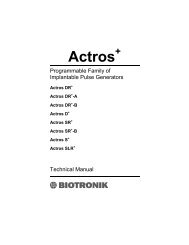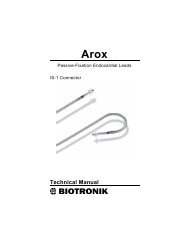Estella Pulse Generators - BIOTRONIK USA - News
Estella Pulse Generators - BIOTRONIK USA - News
Estella Pulse Generators - BIOTRONIK USA - News
You also want an ePaper? Increase the reach of your titles
YUMPU automatically turns print PDFs into web optimized ePapers that Google loves.
64 <strong>Estella</strong> <strong>Pulse</strong> <strong>Generators</strong> Technical ManualTable 19: Rate IncreaseIncrease inRate (ppm/s)Time to IncreaseRate (seconds)1 902 454 2310 9In DDIR and DVIR, the rate increase is slightly slower than indicatedhere (depending on the programmed AV interval). The programmedrate increase setting applies only to the increase in pacing rate duringsensor-driven operation and does not affect the pacing rate during atrialtriggered ventricular pacing.7.7.5 Maximum Sensor RateRegardless of the sensor signal strength, the pacing rate during sensordrivenoperation will never exceed the programmed maximum sensorrate. The maximum sensor rate only limits the pacing rate duringsensor-driven operation and is independent of the rate limit. Themaximum sensor rate (programmable up to 160 ppm) must be less thanor equal to the programmed UTR.NOTE:In the DDIR and DVIR modes, the sensor rates control the ventricularpacing rates independent of the AV Delay.CautionProgramming Modifications—Extreme programming changesshould only be made after careful clinical assessment. Clinicaljudgment should be used when programming permanent pacingrates below 40 ppm or above 100 ppm.7.7.6 Rate DecreaseThe rate decrease parameter determines the maximum rate of changein the pacing rate, if the sensor signal indicates decreasing exertion. InDDDR, VDDR, DOOR, VVIR, VOOR, AAIR, and AOOR, the rate decreasesetting of 0.5 ppm per second decrease in pacing rate would take180 seconds to change from 150 ppm to 60 ppm.


